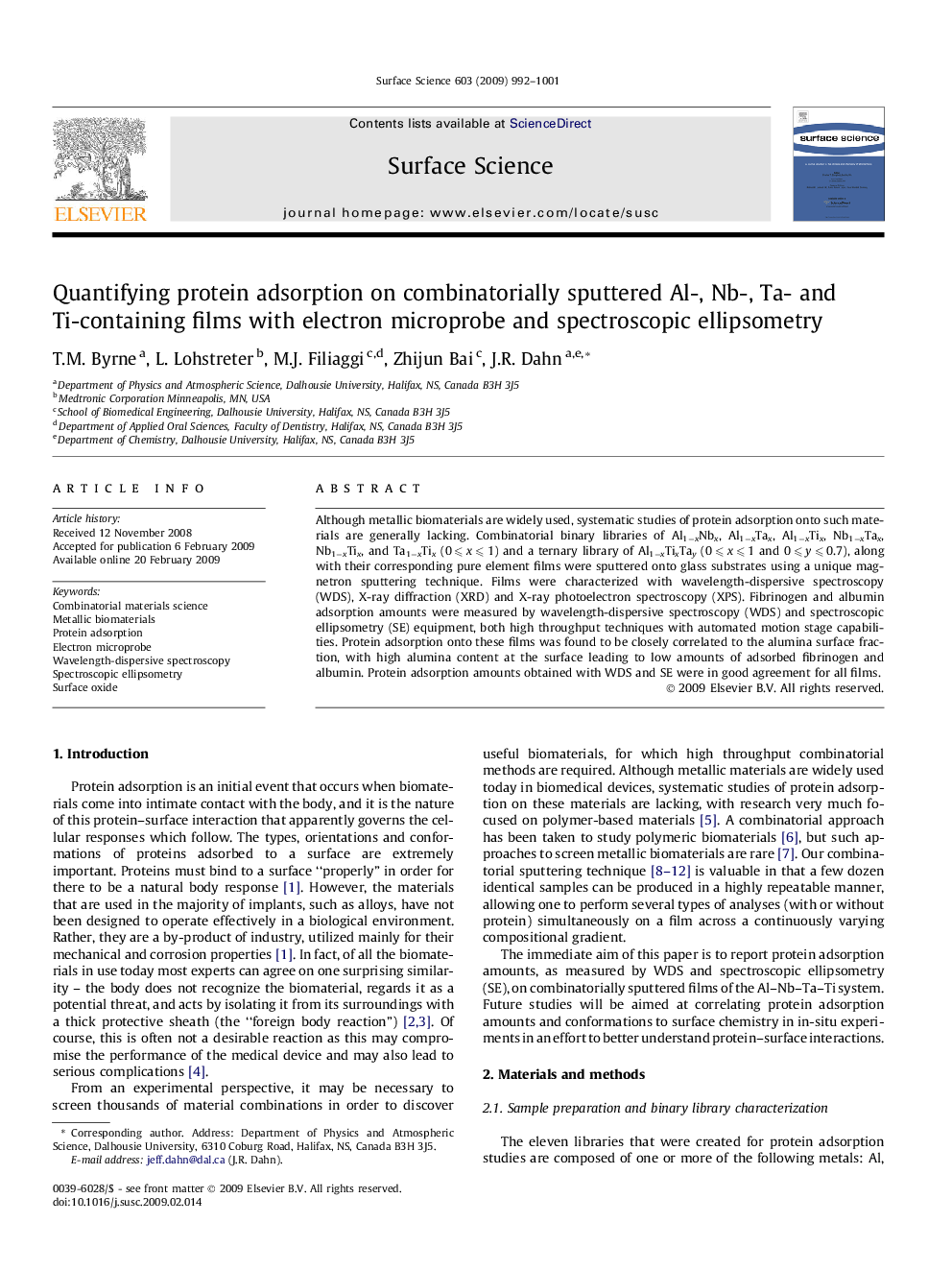| Article ID | Journal | Published Year | Pages | File Type |
|---|---|---|---|---|
| 5423922 | Surface Science | 2009 | 10 Pages |
Abstract
Although metallic biomaterials are widely used, systematic studies of protein adsorption onto such materials are generally lacking. Combinatorial binary libraries of Al1âxNbx, Al1âxTax, Al1âxTix, Nb1âxTax, Nb1âxTix, and Ta1âxTix (0 ⩽ x ⩽ 1) and a ternary library of Al1âxTixTay (0 ⩽ x ⩽ 1 and 0 ⩽ y ⩽ 0.7), along with their corresponding pure element films were sputtered onto glass substrates using a unique magnetron sputtering technique. Films were characterized with wavelength-dispersive spectroscopy (WDS), X-ray diffraction (XRD) and X-ray photoelectron spectroscopy (XPS). Fibrinogen and albumin adsorption amounts were measured by wavelength-dispersive spectroscopy (WDS) and spectroscopic ellipsometry (SE) equipment, both high throughput techniques with automated motion stage capabilities. Protein adsorption onto these films was found to be closely correlated to the alumina surface fraction, with high alumina content at the surface leading to low amounts of adsorbed fibrinogen and albumin. Protein adsorption amounts obtained with WDS and SE were in good agreement for all films.
Keywords
Related Topics
Physical Sciences and Engineering
Chemistry
Physical and Theoretical Chemistry
Authors
T.M. Byrne, L. Lohstreter, M.J. Filiaggi, Zhijun Bai, J.R. Dahn,
